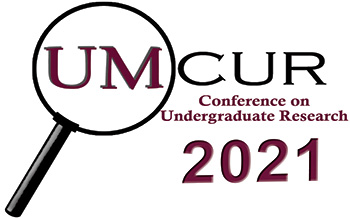Project Type
Poster
Faculty Mentor’s Full Name
Amy Glaspey
Faculty Mentor’s Department
Speech, Language, Hearing, and Occupational Sciences
Abstract / Artist's Statement
Variables in Speech Sound Disorder Treatment: Applying a Published Taxonomy to Clinical Practice
Purpose: Some children have difficulties learning speech sounds within an expected developmental time frame and require speech therapy to improve their intelligibility (i.e., how easily they can be understood by others). Treatment approaches for speech sound disorder can vary greatly in procedures and may differ in efficacy and efficiency. Thus, the purpose of this retrospective study is to examine and describe treatment characteristics that were implemented by a speech-language pathologist as part of a prior study and apply a taxonomy of variables to more readily make comparisons to treatments described in the literature. Baker, Williams, McLeod, and McCauley (2018) developed a treatment taxonomy to analyze and describe 15 speech sound disorder treatments by evaluating the degree, presence, or absence of 72 different variables, which were further divided into categories and subcategories. This taxonomy was applied in the current study to the treatment method that included a modified cycles approach with dynamic levels of scaffolding, or support given to the child during speech production.
Significance: This study is significant because using the taxonomy to describe a treatment approach in detail will allow for a deeper analysis of the treatment approach, comparisons to other approaches, and potentially lead to better measurement of efficacy and efficiency in future studies.
Methods: The participants included two children with speech sound disorder engaged in treatment with a speech-language pathologist or graduate student clinician. To describe the treatment, two research assistants watched videos of the dynamic treatment and recorded quantitative and qualitative data for each variable in the taxonomy. Quantitative measures included a tally of the number of categories that were: 1) observable within one session, 2) observable when multiple sessions were combined, and 3) not observable, and only evident with additional background information from the clinician. In addition, qualitative descriptions were given for each of the 72 variables that were observed.
Results: The results of the quantitative and qualitative analyses will be presented. The number of more observable and less observable variables of the taxonomy will be highlighted and descriptions of qualitative observations will be provided.
Conclusion: Furthermore, the clinical implications of this research will be discussed and the conclusions may inform the delivery of future treatment for speech sound disorders.
Category
Social Sciences
Variables in Speech Sound Disorder Treatment: Applying a Published Taxonomy to Clinical Practice
Variables in Speech Sound Disorder Treatment: Applying a Published Taxonomy to Clinical Practice
Purpose: Some children have difficulties learning speech sounds within an expected developmental time frame and require speech therapy to improve their intelligibility (i.e., how easily they can be understood by others). Treatment approaches for speech sound disorder can vary greatly in procedures and may differ in efficacy and efficiency. Thus, the purpose of this retrospective study is to examine and describe treatment characteristics that were implemented by a speech-language pathologist as part of a prior study and apply a taxonomy of variables to more readily make comparisons to treatments described in the literature. Baker, Williams, McLeod, and McCauley (2018) developed a treatment taxonomy to analyze and describe 15 speech sound disorder treatments by evaluating the degree, presence, or absence of 72 different variables, which were further divided into categories and subcategories. This taxonomy was applied in the current study to the treatment method that included a modified cycles approach with dynamic levels of scaffolding, or support given to the child during speech production.
Significance: This study is significant because using the taxonomy to describe a treatment approach in detail will allow for a deeper analysis of the treatment approach, comparisons to other approaches, and potentially lead to better measurement of efficacy and efficiency in future studies.
Methods: The participants included two children with speech sound disorder engaged in treatment with a speech-language pathologist or graduate student clinician. To describe the treatment, two research assistants watched videos of the dynamic treatment and recorded quantitative and qualitative data for each variable in the taxonomy. Quantitative measures included a tally of the number of categories that were: 1) observable within one session, 2) observable when multiple sessions were combined, and 3) not observable, and only evident with additional background information from the clinician. In addition, qualitative descriptions were given for each of the 72 variables that were observed.
Results: The results of the quantitative and qualitative analyses will be presented. The number of more observable and less observable variables of the taxonomy will be highlighted and descriptions of qualitative observations will be provided.
Conclusion: Furthermore, the clinical implications of this research will be discussed and the conclusions may inform the delivery of future treatment for speech sound disorders.
